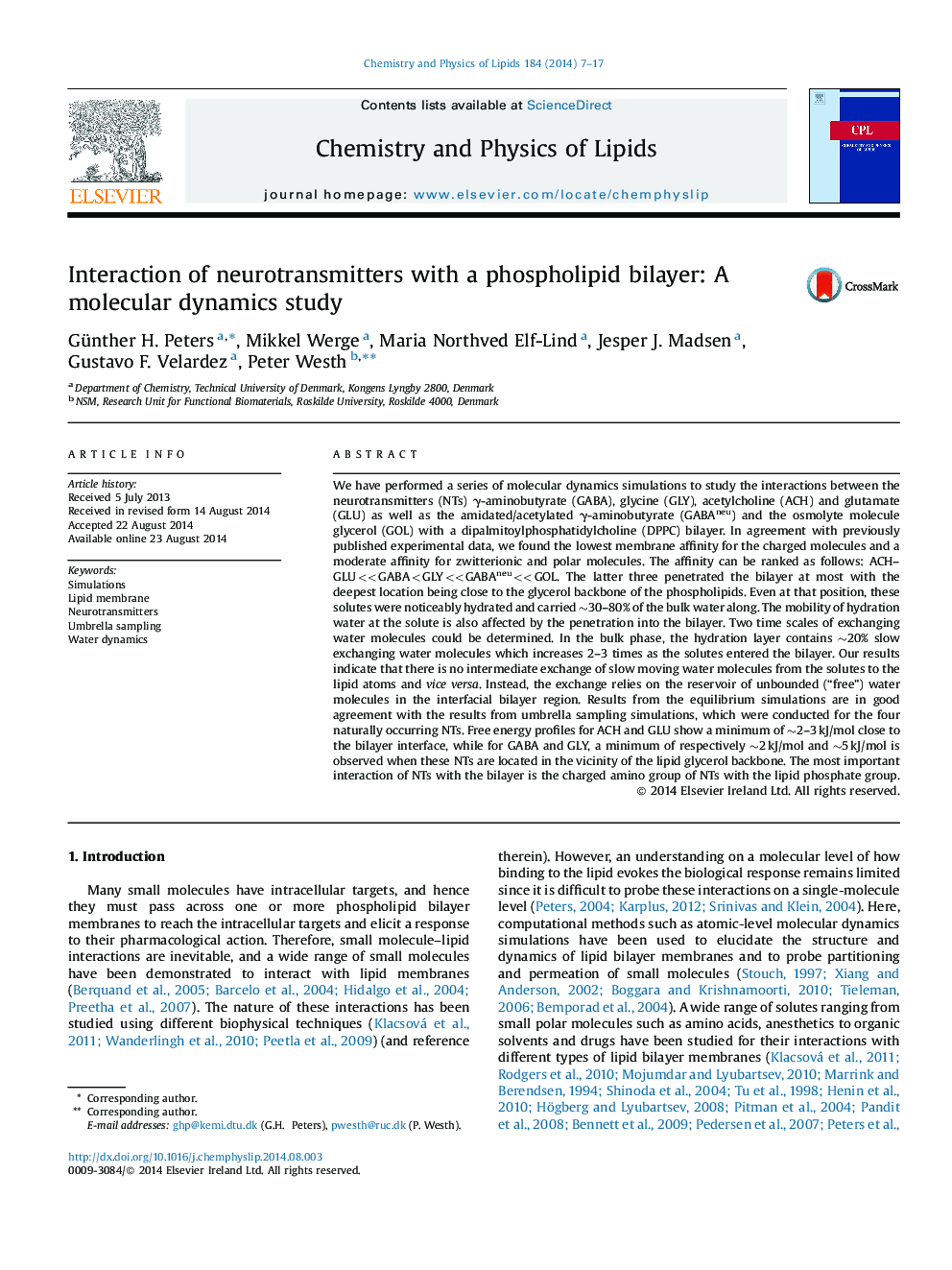| کد مقاله | کد نشریه | سال انتشار | مقاله انگلیسی | نسخه تمام متن |
|---|---|---|---|---|
| 1251726 | 1496293 | 2014 | 11 صفحه PDF | دانلود رایگان |
• Neurotransmitter interactions with DPPC varied reflecting the nature of the solutes.
• Low absorption/affinity for charged neurotransmitters towards zwitterionic bilayer.
• Zwitterionic and polar molecules penetrating and located at lipid glycerol backbone.
• The general picture that emerges is that electrostatic interactions are predominant.
• Significant amounts of water co-partitioned with the solutes into the membrane.
We have performed a series of molecular dynamics simulations to study the interactions between the neurotransmitters (NTs) γ-aminobutyrate (GABA), glycine (GLY), acetylcholine (ACH) and glutamate (GLU) as well as the amidated/acetylated γ-aminobutyrate (GABAneu) and the osmolyte molecule glycerol (GOL) with a dipalmitoylphosphatidylcholine (DPPC) bilayer. In agreement with previously published experimental data, we found the lowest membrane affinity for the charged molecules and a moderate affinity for zwitterionic and polar molecules. The affinity can be ranked as follows: ACH–GLU << GABA < GLY << GABAneu << GOL. The latter three penetrated the bilayer at most with the deepest location being close to the glycerol backbone of the phospholipids. Even at that position, these solutes were noticeably hydrated and carried ∼30–80% of the bulk water along. The mobility of hydration water at the solute is also affected by the penetration into the bilayer. Two time scales of exchanging water molecules could be determined. In the bulk phase, the hydration layer contains ∼20% slow exchanging water molecules which increases 2–3 times as the solutes entered the bilayer. Our results indicate that there is no intermediate exchange of slow moving water molecules from the solutes to the lipid atoms and vice versa. Instead, the exchange relies on the reservoir of unbounded (“free”) water molecules in the interfacial bilayer region. Results from the equilibrium simulations are in good agreement with the results from umbrella sampling simulations, which were conducted for the four naturally occurring NTs. Free energy profiles for ACH and GLU show a minimum of ∼2–3 kJ/mol close to the bilayer interface, while for GABA and GLY, a minimum of respectively ∼2 kJ/mol and ∼5 kJ/mol is observed when these NTs are located in the vicinity of the lipid glycerol backbone. The most important interaction of NTs with the bilayer is the charged amino group of NTs with the lipid phosphate group.
Journal: Chemistry and Physics of Lipids - Volume 184, December 2014, Pages 7–17
